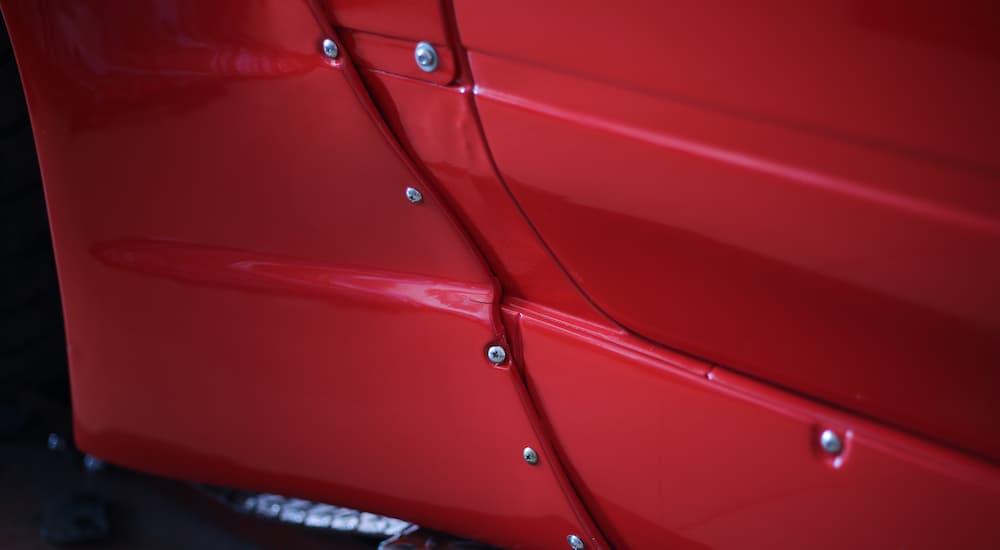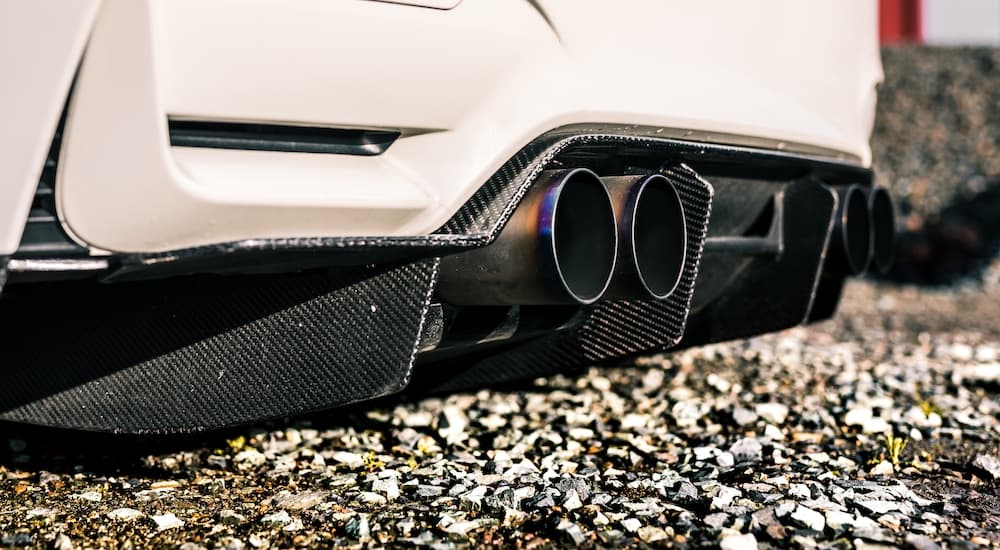When it comes to aftermarket changes and modifications you can make to your vehicle, you have a ton of different options available. Nothing is quite as dramatic, at least in terms of visual impact, as a body kit that alters the look of your ride. There are a huge number of body kits available, with lots of different options and features, and they can create a wide range of effects once installed. With so many choices available to you, it helps to have a sense of what you’re looking for, your goals in choosing a body kit, and the different materials used in order to get everything you want.
What Is a Body Kit?
Before we go any further, let’s take a moment to answer this all-important question; a body kit is a collection of parts designed to be installed on the exterior of your vehicle. The contents of a body kit can vary quite a lot depending on what you choose; some will include just a few pieces, while others can have many different parts. For example, you could choose a new bumper kit or a custom fender, but you could also get a kit that includes front and rear bumpers, side skirts, a rear diffuser, a custom roof, and more. It all depends on what you’re looking for.
You have a ton of options available to you when looking at different body kits, and all of them are designed to let you truly customize the look of your vehicle. This can be something simple like bumper lips to give the front end of your car a different feel, or you could install gullwing doors and make your vehicle completely your own. From custom lighting and wheels to rear spoilers and trunk hatches, just about any part of your vehicle can be upgraded or replaced with a body kit.
What’s the Purpose of a Body Kit?
Overall, the purpose of a body kit is to customize the aesthetic or looks of your vehicle in a huge variety of ways. These are absolutely not necessary for any vehicle, and they’re generally not designed to improve the longevity or functionality of your car. If you want to customize the look of your vehicle, then no other aftermarket change you can make will be as dramatic as a body kit. Best of all, since so many different parts are being made, you can mix and match options to get exactly the look you want. You don’t have to choose a kit with lots of pieces––instead, you can combine each part you prefer.

Can a Body Kit Improve Performance?
This is a bit of a tricky question, and you’ll probably get different answers depending on who you ask. If you ask someone trying to sell you a body kit, they might tell you that some parts can improve performance by making your vehicle more aerodynamic. The validity of that statement is a bit nebulous––while it is technically true that some body-kit components can make your vehicle more aerodynamic, that doesn’t mean it will suddenly transform into a sports car.
If you’re looking to improve your vehicle’s performance, then you need to look beyond just what’s possible with a body kit. Other things like upgrading your engine, suspension, and tires can all have a bigger impact on your car’s performance. With that in mind, you could upgrade your car’s exhaust and intake to boost the power of your engine or add a spoiler and diffuser to help with traction and handling. Body kits are mostly about customizing the look of your ride, but a few options can help with performance along with other components.
What Types of Materials Are Used in Body Kits?
Most body kits will use one of four different materials:
- Fiberglass: In general, fiberglass body kits are the most common and popular option out there. Fiberglass is lightweight, so it can add to your vehicle without making it heavier, and it’s easy to mold. However, fiberglass can be fragile and may come with a rough finish, so it’s important to choose one from a reliable and respected manufacturer.
- Polyurethane: One of the other most-common options, polyurethane is a type of plastic that’s quite durable. It can withstand abuse better than fiberglass, so keep that in mind if you’re looking for a body kit to use on your daily driver. Polyurethane kits can be more expensive than fiberglass, but imperfections and flaws are less common.
- ABS Plastic – Made from a polymer called Acrylonitrile Butadiene Styrene, this plastic is often used by car manufacturers for the bodies of their vehicles. That means ABS plastic kits are a great choice if you want something that matches the look and feel of factory-made body panels. Due to the high cost of designing and making these types of kits, they’re also a pricey choice.
- Carbon Fiber – Carbon fiber is the best of all worlds: lightweight, incredibly strong, and highly moldable. If you’re looking for the highest quality in a body kit, carbon fiber is the way to go. The only real downside is that this is typically the most expensive option, but it’s worth it if your budget can handle it.
Choosing the right material for a body kit really comes down to what you’re looking for and what your budget can allow. The common materials all work well and can look great, but polyurethane and ABS are more likely to survive a collision, while even minor hits can be the end for fiberglass. Carbon fiber is the best choice for overall quality, but it’s an expensive way to go that can be difficult to afford if you’re going for multiple pieces at once.
How Do I Choose the Right Body Kit?
Choosing the right kit depends entirely on what you’re looking to get from it. Body kits are all about customizing the look of your ride, so a great place to start is by deciding what you want your car to look like. Do you want it to have a wide and aggressive shape to go along with a new, lowered suspension you just installed? Or are you looking for a sleek design that feels like it was poured into being rather than manufactured? You’ll find a body kit that can meet pretty much any aesthetic goal, so take some time to plan what you want your vehicle to look like and then start browsing what’s out there.

Is Installing a Body Kit Easy?
Some kits are easier to install than others, but most are pretty straightforward and can be done at home with some basic tools. Completely replacing your bumper is going to be more work than add-on bumper lips that you install onto your factory bumpers. Similarly, there’s a pretty big difference between installing side skirts onto your factory rocker panels and replacing your current doors with new Lambo doors that open vertically.
A lot of body kits require securing the new components into place with screws or bolts, and you may need to cut into the body panels on your vehicle. If you’re new to these kinds of aftermarket changes, it’s a good idea to start small and get a feel for things––you can always add more later as you get more comfortable. You should also make sure you have the proper tools to handle the materials you’re working with, so look into what you need for fiberglass, ABS, polyurethane, or carbon fiber based on the material you choose.
Finally, remember that customizing your ride with aftermarket options is supposed to be fun and about making your car truly your own. Try not to get bogged down in worrying about boosting performance or keeping up with what anyone else is doing. Focus on what you want your car to look like, how you want it to drive and look, and make it into something you’ll love getting into every time you sit behind the wheel. Body kits are a great way to make your vehicle your own and make an impression everywhere you go, so have some fun and drive safe!

